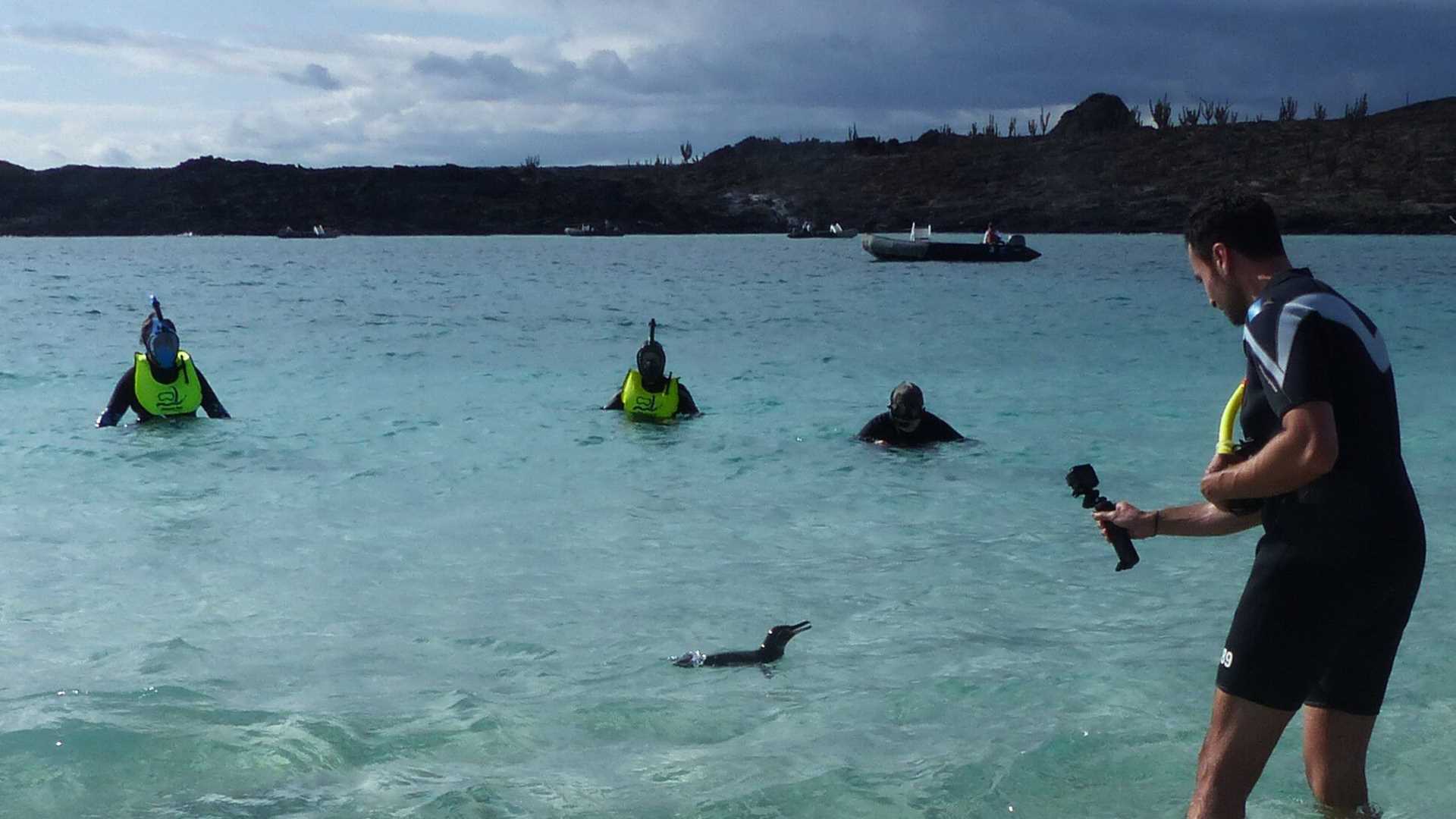As we left the eastern islands and headed towards the central part of the archipelago, we experienced a very different geology. These somewhat younger islands have younger lava flows, pioneer vegetation, and a unique landscape.
Bartolome Island is a satellite volcanic cone from James Island, and it has a unique lunar landscape that is often referred to as the moonscape of the Galapagos. Our day started early in the morning with a pre-breakfast outing, a favorite for most of our guests. The best part about starting our day as the sun rises is that we get to see how the wildlife wakes up with the sunlight!
Some of us hiked up the cone of Bartolome. We experienced quite a workout with a series of 380 wooden steps! Every 100 steps or so, we regrouped for a moment to talk about the fascinating formation of the islands and to take some beautiful pictures with the great light. We continued all the way to the summit at about 300 feet.
During our coastal exploration, we toured around in Zodiacs. The pitch-black lava contrasts with the turquoise water to create the most spectacular scenery for wildlife! We spotted blue-footed boobies in the early morning, a flock of penguins looking for a meal, herons ready to make their first catch of the day, and fish coming very close to the surface. The volcanic landscape was amazing, and we observed iconic features, including the famous Pinnacle Rock.
After breakfast, the golden beach looked appealing. We sunbathed, snorkeled, and took photos. Snorkeling here is fascinating because we can observe sea lions, rays, reef sharks, penguins, and an amazing number of fish.
Sombrero Chino Islet is a volcanic cone on the southern coast of James Island. Sombrero Chino is a combination of lava flows, lava tubes, and uplifted sea floor. The beautiful white sand beach is home to sea lions, lava lizards, pioneer plants, and succulents.
Sombrero Chino is also the home of the northernmost penguin in the world, the endemic Galapagos penguin. How special it is to see a penguin surrounded by lava and cacti! There is nowhere else in the world that one can swim with such a bird and watch as it flies underwater! The Galapagos penguin is one of the world’s eighteen penguin species. It is the second smallest and the northernmost penguin. Its origin is in South America, and its closest relative, the Magellan penguin, lives in Chile. The Galapagos penguin has adapted to living on the equator, and it is an endemic species. Found along the lava rocks, the penguins are iconic on the islands. Snorkeling with a penguin in the Galapagos is a unique and amazing experience.







